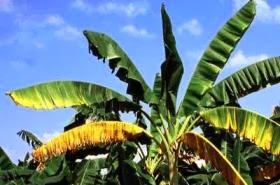Only a couple of weeks ago I wrote an article on this site here that scientists from Wageningen University in the Netherlands had demonstrated that Panama Disease – caused by the fungus Fusarium oxysporum cubense TR4 – had migrated from southeast Asia to Jordan. The disease was first detected in Asia in the 1990s, and is now found in Taiwan, Indonesia, Malaysia, the Philippines, China and northern Australia.
I feared that major banana-producing countries in Africa and Latin America were also under increased threat. Now, those fears seem to have materialized because TR4, the destructive strain of Panama Disease, has been discovered on Cavendish bananas in Mozambique in early 2013[1].
All sites where the disease was found have now been isolated, the affected plants destroyed, and appropriate phytosanitary measures have been implemented to prevent the disease from further spreading.
“I will not be surprised if it pops up in Latin America in the near future,” says Gert Kema, a Fusarium researcher at Wageningen University. That region, along with the Caribbean, accounts for more than 80 percent of banana exports.
As usual, the effects of the outbreak are downplayed by government officials and Dr Serafina Mangana, Head of Mozambique's national plant protection organization (NPPO), is on record saying that “the outbreak is limited to a few fields on the farm”.
Yeah, right.
[1] Joint statement issued by the Mozambique Department of Agriculture, Matanuska, IITA, Stellenbosch University and Bioversity International: New strain of banana disease arrives in Africa

No comments:
Post a Comment